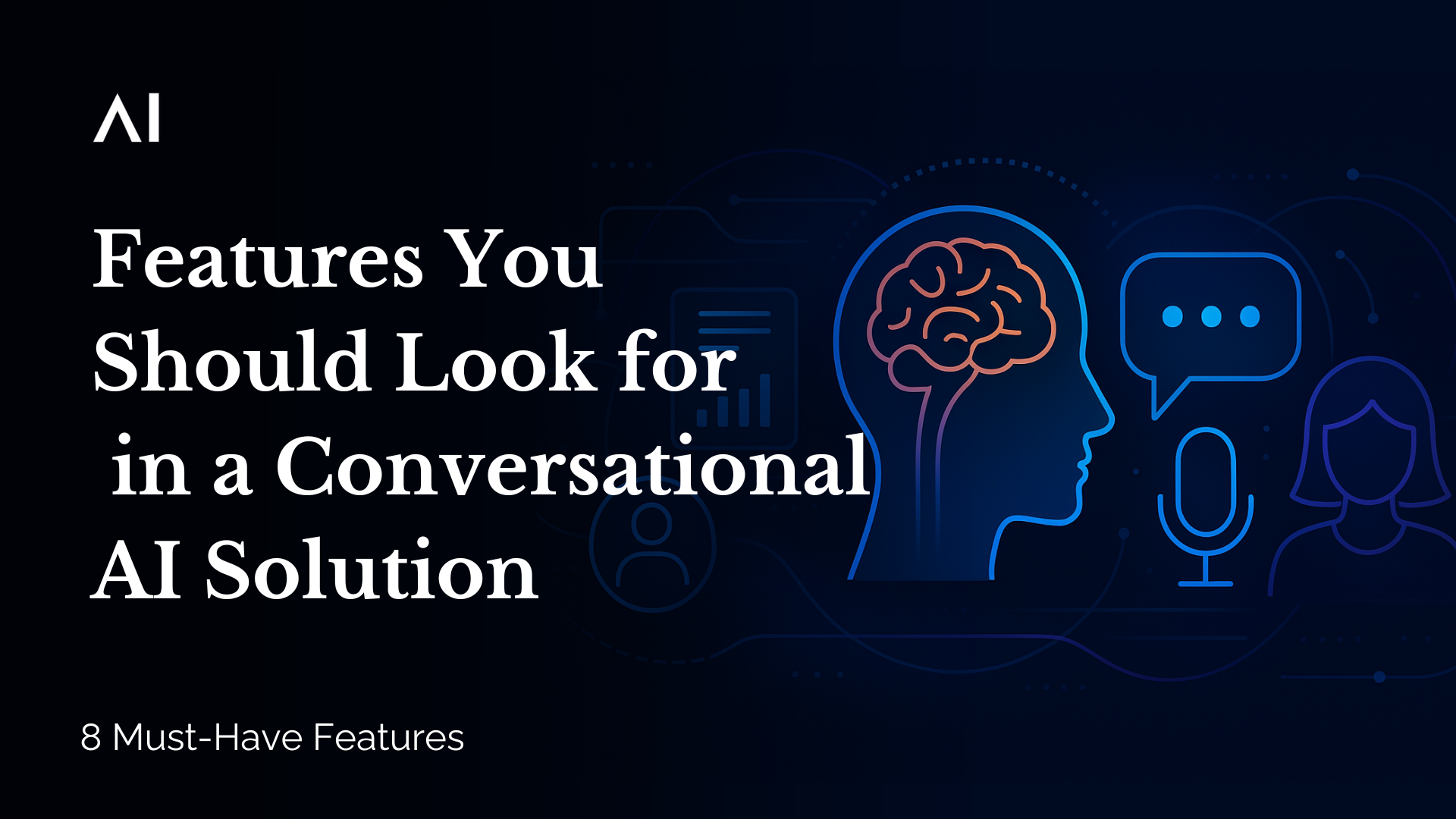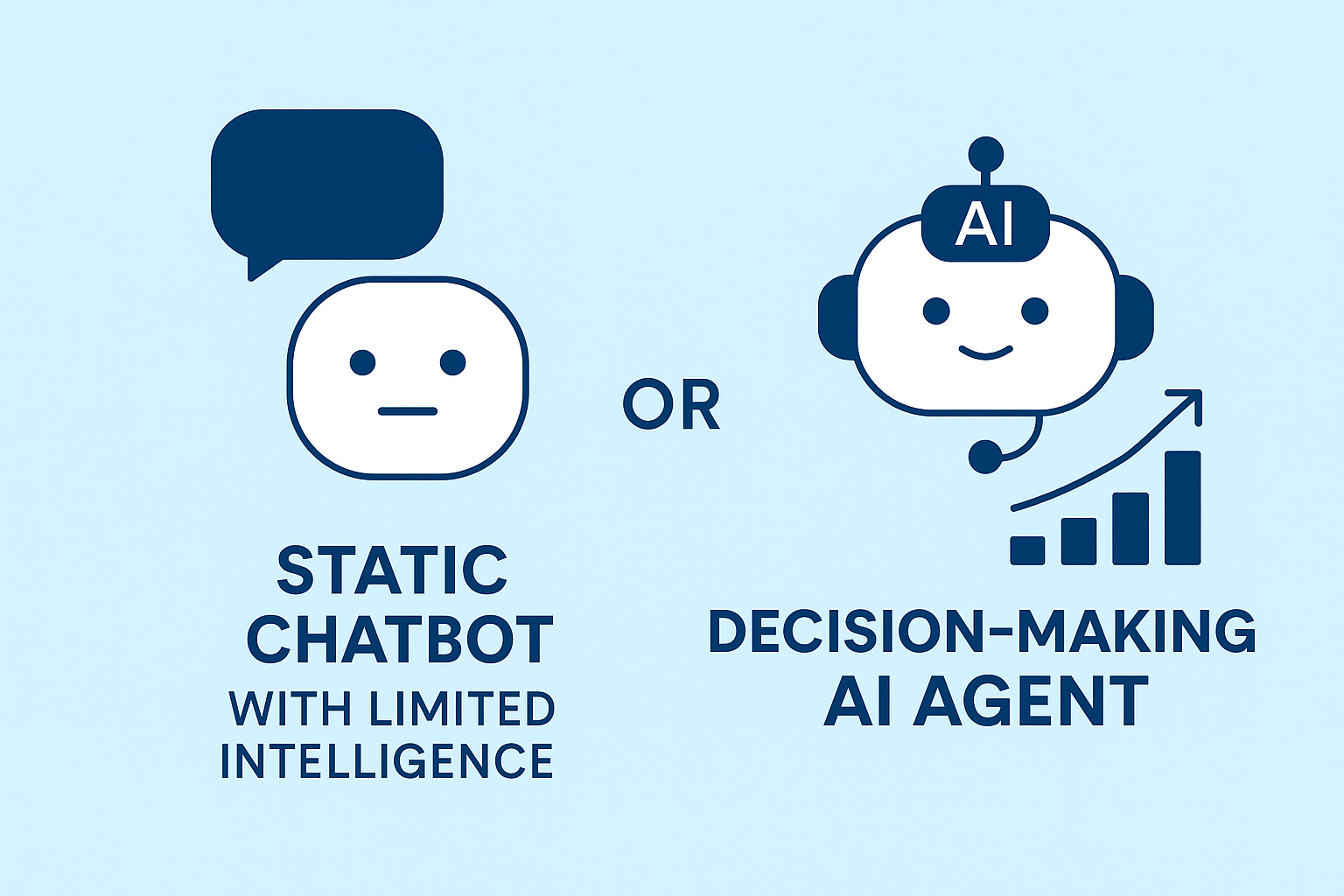Join our WhatsApp Community
AI-powered WhatsApp community for insights, support, and real-time collaboration.
Discover 8 must-have features for enterprise Conversational AI — from agentic reasoning to omnichannel depth — and how Fluid AI delivers it all in 60 days or less.

| Why is AI important in the banking sector? | The shift from traditional in-person banking to online and mobile platforms has increased customer demand for instant, personalized service. |
| AI Virtual Assistants in Focus: | Banks are investing in AI-driven virtual assistants to create hyper-personalised, real-time solutions that improve customer experiences. |
| What is the top challenge of using AI in banking? | Inefficiencies like higher Average Handling Time (AHT), lack of real-time data, and limited personalization hinder existing customer service strategies. |
| Limits of Traditional Automation: | Automated systems need more nuanced queries, making them less effective for high-value customers with complex needs. |
| What are the benefits of AI chatbots in Banking? | AI virtual assistants enhance efficiency, reduce operational costs, and empower CSRs by handling repetitive tasks and offering personalized interactions. |
| Future Outlook of AI-enabled Virtual Assistants: | AI will transform the role of CSRs into more strategic, relationship-focused positions while continuing to elevate the customer experience in banking. |
Conversational AI has evolved far beyond scripted chatbots and rule-based assistants. Today, enterprises need systems that don’t just respond — they need platforms that understand, decide, and act.
That’s the defining shift toward Agentic Conversational AI — platforms that combine reasoning, contextual understanding, and connected workflows.
As enterprises rethink their customer experience (CX), employee support, and internal automation strategies, the question isn’t “Do we need Conversational AI?” anymore.
It’s “Which platform can deliver enterprise-grade intelligence, securely, at scale?”
Let’s break down the eight essential features that separate ordinary chatbots from true enterprise Conversational AI platforms — and how these come alive in platforms like Fluid AI.
Traditional chatbots wait for user prompts. Agentic Conversational AI systems anticipate, plan, and execute.
An Agentic AI architecture equips the system with reasoning, context retention, and the ability to perform multi-step tasks autonomously.
For example, instead of merely answering “What’s my account balance?”, the AI can pull customer data, detect unusual activity, offer spending insights, and even initiate secure verification — all without human intervention.
Platforms like Fluid AI are built natively on Agentic AI workflows, meaning every conversation can branch into decision-making, external data lookups, and automated follow-ups.
This turns conversations into end-to-end business actions, not static exchanges.
To understand how Agentic AI drastically reduces enterprise complexity, explore our blog on How Agentic AI Cuts Vendor Complexity by 50%.

Enterprises don’t communicate on one channel anymore.
Customers move fluidly between websites, mobile apps, WhatsApp, voice calls, and email.
A true Conversational AI platform must mirror this behavior with an omnichannel presence — ensuring one unified experience across every touchpoint.
Fluid AI’s platform enables a single AI brain to operate across voice bots, website chatbots, email workflows, and WhatsApp interactions, maintaining consistent memory and tone.
That means a conversation that starts on the website can seamlessly continue via email or WhatsApp, without losing context.
The result: reduced friction, higher engagement, and better customer trust.
Every enterprise wants agility.
A no-code or low-code workflow builder empowers non-technical teams to design, test, and deploy AI-driven conversations without waiting on development cycles.
Fluid AI’s no-code builder gives enterprises the flexibility to:
This democratizes AI creation — allowing business users, CX leaders, and data teams to co-build conversational flows that evolve with changing goals.
A Conversational AI platform is only as powerful as its integrations.
To deliver meaningful, actionable conversations, the AI must connect to the systems that power your business — CRMs, ERPs, databases, ticketing tools, and more.
Fluid AI’s integration framework connects seamlessly with enterprise ecosystems like Salesforce, SAP, ServiceNow, and custom APIs.
That enables the AI to do more than just talk — it can pull customer data, update records, generate reports, and trigger workflows.
For instance, a telecom user can ask, “Upgrade my plan to 5G and send the invoice to my email,” and the AI will execute it directly through backend APIs.
No handoff. No friction. Real action.
Voice-driven experiences are now an enterprise necessity.
Customers expect the ability to speak naturally — and to be understood instantly.
The next frontier goes a step further: AI avatars that communicate visually, with expressions and tone tuned to brand personality.
Fluid AI brings voice and avatar interfaces to enterprise-grade Conversational AI, blending speech recognition, emotional tonality, and visual realism.
This creates lifelike digital agents that can host virtual branches, onboard customers, or assist employees.
Imagine a retail bank branch with an AI avatar greeting customers 24/7, answering account questions, and escalating complex requests — all with human-like empathy.
Enterprises, especially in sectors like banking, healthcare, and government, face intense compliance scrutiny.
Data privacy, access control, and auditability are not features — they’re fundamentals.
A capable Conversational AI platform must support on-premise deployment, encryption standards, role-based access, and complete traceability of interactions.
Fluid AI enables sovereign AI deployments that run fully inside enterprise infrastructure — ensuring data never leaves the firewall.
From identity verification to data redaction, governance is baked into every layer, not bolted on.
That’s what makes Conversational AI truly enterprise-ready.
To understand how AI can act as a digital defense layer within regulated industries, explore our article on How Autonomous AI Agents Become the Enterprise Shield.
Conversations without memory feel robotic.
An advanced platform should retain not just what users say, but what they mean — understanding patterns, history, and preferences.
Fluid AI integrates long-term conversational memory, enabling personalized, context-aware exchanges.
If a user says, “Continue from where we left off yesterday,” the AI recalls prior interactions, active requests, and even unresolved issues.
In customer service, that means no repetition.
In employee workflows, it means persistent context — from IT tickets to HR updates.
It’s not just smart; it’s humane.
Every interaction is data.
An enterprise Conversational AI platform should learn continuously from user intent, language patterns, and behavioral insights.
Fluid AI’s analytics dashboard visualizes KPIs like engagement rates, resolution time, and escalation patterns — while also identifying training gaps.
But more importantly, the platform can auto-tune itself through reinforcement learning loops, improving responses and flow efficiency over time.
This means enterprises don’t just deploy Conversational AI — they evolve it.

Enterprises adopting Conversational AI today face two paths:
The difference isn’t just in response quality — it’s in outcome generation.
Platforms like Fluid AI turn conversations into actions, agents into decision-makers, and dialogues into measurable business results.
As AI becomes the interface for everything — from customer onboarding to operations — choosing the right Conversational AI platform is no longer a technical decision.
It’s a strategic one.
For a closer look at how enterprises can empower internal teams through autonomous AI systems, read our post on Why AI Agents Have Become a Leadership Imperative.
Each of these eight features — from Agentic reasoning and voice channels to memory, analytics, and security — forms the foundation of Fluid AI’s Agentic AI Platform.
It’s designed for enterprises that want more than just a chatbot — they want a system that can think, act, and evolve alongside their business.
With Fluid AI, you can:
In short, Fluid AI helps you move from conversation to conversion — faster, smarter, and more securely.
If you’re exploring how to implement these capabilities in your enterprise, head over to the Fluid AI Features page to explore how your Conversational AI solution can go live — and start delivering measurable outcomes — in 60 days or less.
Fluid AI is an AI company based in Mumbai. We help organizations kickstart their AI journey. If you’re seeking a solution for your organization to enhance customer support, boost employee productivity and make the most of your organization’s data, look no further.
Take the first step on this exciting journey by booking a Free Discovery Call with us today and let us help you make your organization future-ready and unlock the full potential of AI for your organization.

AI-powered WhatsApp community for insights, support, and real-time collaboration.
.webp)
.webp)

Join leading businesses using the
Agentic AI Platform to drive efficiency, innovation, and growth.
AI-powered WhatsApp community for insights, support, and real-time collaboration.